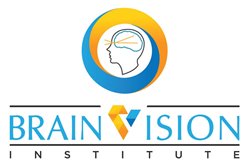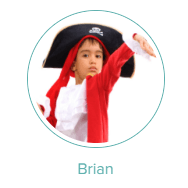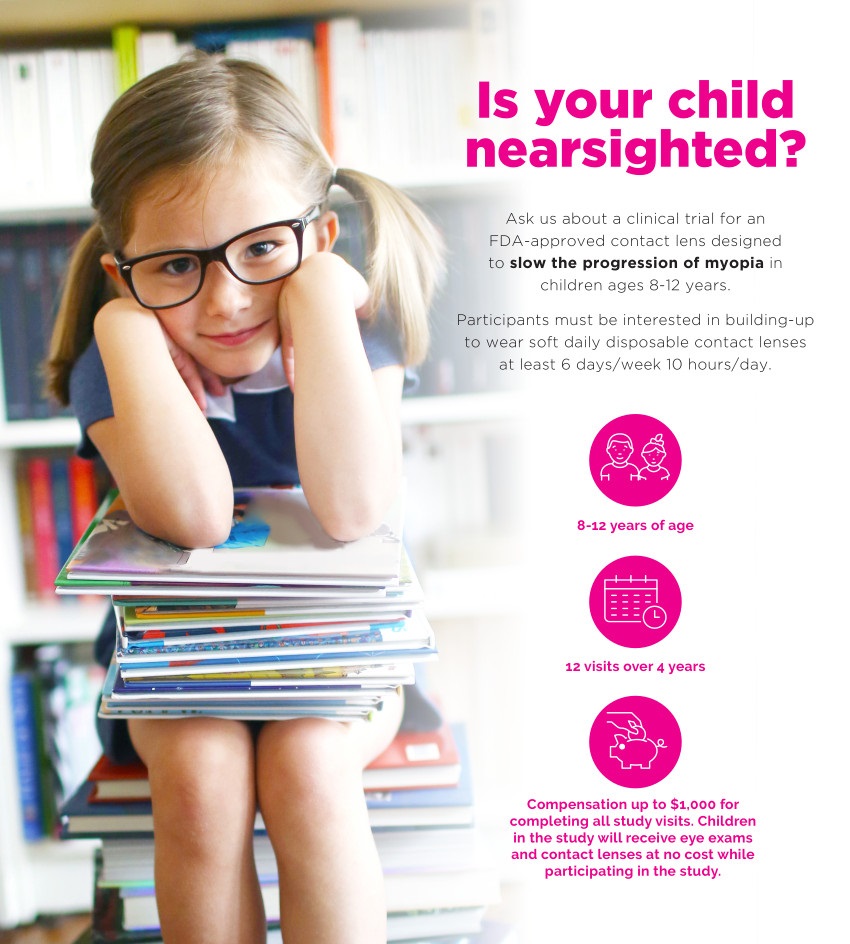Learn how Brian got back to acting, and not just acting out
Brian is the youngest of three children and lives at home with his mother, father and two older siblings. He is seven years old. His parents reported that Brian was delivered full-term; however, he was born with Transient Tachypnea of the Newborn (TTN) causing respiratory difficulties which required the use of an incubator and oxygen. Brian spent approximately a week in the Special Care Nursery before being discharged.
Although Brian experienced a difficult start, his parents reported that he is currently in good health. Currently, Brian takes the medications Tofrinal and Risperadol once daily. Brian was seen for Interactive Metronome training and evaluation at the Palmetto Language & Speech Center, LLC based on a physician referral. Caregivers expressed concern for Brian with regard to language processing, attention and focusing in activities of daily living (ADLs). During the evaluation, his parents reported that Brian exhibits low to no impulse control and a high degree of distractibility.
Brian’s mother also reported that he has difficulty following directions given orally which results in directions being repeated several times. According to his mother’s report, Brian usually expresses his anger or frustration by yelling or having an “emotional meltdown.” His parents reported that Brian exhibits the following behaviors in his natural environment: short attention span, hyperactive behavior and repetitive habits such as chewing. Brian has a very good relationship with his parents. His parents reported that he has a better relationship with his sister than his brother but both struggle with Brian’s lack of impulse control.
Brian attended Baptist preschool program until he was four years old. At that time, he began attending preschool at Lake Elementary. Brian then attended a 5-K program at Lake, where he is currently enrolled. His parents described him as “friendly, loving, and smart.”
READ BRAIN'S FULL SUCCESS STORY
Catrina - Back in time for class!
 Catrina is a 10-year-old girl with a diagnosis of ADHD, combined type, and she demonstrated multiple characteristics of Central Auditory Processing Disorder. Catrina’s mother was concerned with how difficult it was for Catrina to communicate, due to the fact that she omitted salient words during conversation. She also would frequently become confused in school when auditory information was presented. For example, Catrina came home from school one day and did not realize she had a test the next day, even though it had been discussed in length during the school day. Obviously, the following day she failed the test.
Catrina is a 10-year-old girl with a diagnosis of ADHD, combined type, and she demonstrated multiple characteristics of Central Auditory Processing Disorder. Catrina’s mother was concerned with how difficult it was for Catrina to communicate, due to the fact that she omitted salient words during conversation. She also would frequently become confused in school when auditory information was presented. For example, Catrina came home from school one day and did not realize she had a test the next day, even though it had been discussed in length during the school day. Obviously, the following day she failed the test.
Several accommodations had been made in the school setting; however, they were of no assistance. Catrina’s family began to lose faith in the school system. It was for this reason that Catrina’s parents decided they would home school her for a year in the hope that she would be up to speed by fall 2009. In June 2008, Catrina’s family contacted a clinic regarding information on Interactive Metronome (IM).
The IM program provides a structured, goal-oriented process that challenges the patient to synchronize a range of hand and foot exercises to a precise computer-generated reference tone heard through headphones. The patient
attempts to match the rhythmic beat with repetitive motor actions. A patented auditory-visual guidance system provides immediate feedback measured in milliseconds, and a score is provided.
Erin - Burned out no more!
 Erin had a diagnosis of PDD/Autism. She was verbal but unable to have a purposeful conversation. Her voice was very high-pitched, and other children turned away from her when she would go up to them and start reciting lines from various Disney movies or Barney episodes on TV. She had been attending traditional OT/PT and Speech therapy visits for 7 out of her 8 years of life and the family was reaching burnout status, as her progress seemed to be very slow.
Erin had a diagnosis of PDD/Autism. She was verbal but unable to have a purposeful conversation. Her voice was very high-pitched, and other children turned away from her when she would go up to them and start reciting lines from various Disney movies or Barney episodes on TV. She had been attending traditional OT/PT and Speech therapy visits for 7 out of her 8 years of life and the family was reaching burnout status, as her progress seemed to be very slow.
Prior to her discharge, we decided to give one more thing a try. Interactive Metronome. Mom had been reading about progress in attention and focus with children who performed the IM exercises. She wasn’t sure how Erin would do, but since it was summertime and their schedule wasn’t as busy it would be worth the time needed to give IM a try.
Initially, Erin had difficulty perceiving what she needed to do – she required hand over hand assistance during the first session for 50% of her exercises. Erin was unable to comply with the IM assessment tool, so we decided to just jump into some exercises to see if we could capture her attention. We struggled initially, but then discovered that if we included some type of object, she would participate! Her favorite exercise was to pat her white bunny while she had a switch on her hand – initially hand over hand, but then after a few sessions, she began to pat her bunny to the beat! IM is just so flexible that way – as long as we could involve a switch, we were good to go!
READ ERIN'S FULL SUCCESS STORY
Marcus - IM makes living with Autism easier!
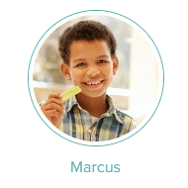 Marcus is a 12-year-old boy with high-functioning autism who returned to occupational therapy after a break of several years. He was doing well in school but he had trouble with daily living activities such as:
Marcus is a 12-year-old boy with high-functioning autism who returned to occupational therapy after a break of several years. He was doing well in school but he had trouble with daily living activities such as:
- Unable to dress himself.
- Poor handwriting.
- Was unable to wash his hair by himself.
- He chewed his food in the front of his mouth, which affected his diet.
- He rarely looks at others while speaking.
- He used single-word conversations
- He walked with a very wide gait (80º deviation)
- He lacked the ability to plan and execute movements.
Given these problems, Mark started Interactive Metronome®(IM) therapy twice a week for 30-minute sessions. IM is a researched-based program that provides a structured, goal-oriented process that challenges the patient to
synchronize whole-body exercises to a precise computer-generated reference beat. The patient attempts to match the rhythmic beat with repetitive motor actions. An auditory-visual guidance system provides immediate feedback measured in
milliseconds (ms), and a score is provided. Over the course of the training, the patient sees improvements in stronger motor control and coordination, enhanced balance and gait, and improved language and cognition.
He started each session with a few minutes in the ball pit to help him relax and self–organize. He then did 10 minutes of IM, took a short break on a swing or trampoline, and then a final 10 minutes of IM. As his skills improved, he did 20 minutes of IM and then practiced dressing skills or handwriting.
Kaitlin & IM-HOME
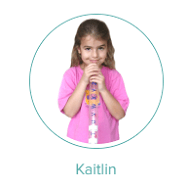 Kaitlin could never have been described as a quiet and unassuming child. From an early age she learned to take control of her environment and was often found climbing cabinetry and stairwells in her house. However, this outward appearance of self-confidence and often open defiance were dichotomous to true feelings of decreased self-worth, inferiority, and overall lowered self-esteem. At the age of 6 years of age it emerged that this front could no longer suffice as a protection strategy.
Kaitlin could never have been described as a quiet and unassuming child. From an early age she learned to take control of her environment and was often found climbing cabinetry and stairwells in her house. However, this outward appearance of self-confidence and often open defiance were dichotomous to true feelings of decreased self-worth, inferiority, and overall lowered self-esteem. At the age of 6 years of age it emerged that this front could no longer suffice as a protection strategy.
Kaitlin’s teachers were aware of the challenges that she presented with comprehension and processing and recommended further testing be performed to come up with a diagnosis. As a student of a private school, OT services were not available as a referral source. Through private OT consultation an initial plan and prioritization of issues was set in place as follows:
• Integration of visual motor skills to whole task activities
• Increased length of focused attention to non-preferred/challenging activities
• Proximal stability/core strength during static tasks
• Complete standardized testing in clinic and school-based settings to establish possibility of diagnosis related to learning disability
• Sustaining attention and compliance to IM-HOME
• Vocal regulation and articulation
• Recognition of body part identification during motoric activity
• Relaxed body posture and engaged facial exchanges during communication
As a case in progress, initial concerns were voiced by her parents, teachers and close friends. Kaitlin commenced an IM program designed to aid attention and entice engagement. Activities were set between each IM exercise in a “Funblast” program format. This empowered Kaitlin to participate as the choices remained up to her.
READ KAITLIN'S FULL SUCCESS STORY
Micah
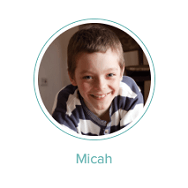 Micah is a young boy who attends a school for gifted students. He has auditory processing and SI concerns. Additionally, while he hasn’t been diagnosed with ADHD, it does run in his family and he has been having trouble maintaining focus in school. Micah’s Pre LFA scores were between 73-226 ms. He only attended 11 sessions because of financial considerations and the impressive results already being seen; however, more IM has been recommended if Micah is ultimately diagnosed as ADHD.
Micah is a young boy who attends a school for gifted students. He has auditory processing and SI concerns. Additionally, while he hasn’t been diagnosed with ADHD, it does run in his family and he has been having trouble maintaining focus in school. Micah’s Pre LFA scores were between 73-226 ms. He only attended 11 sessions because of financial considerations and the impressive results already being seen; however, more IM has been recommended if Micah is ultimately diagnosed as ADHD.
Micah’s Interim LFA showed improvement, and his final LFA scores were between 24-112 ms. More importantly, Micah’s mother immediately reported fantastic results; Micah regained focus, his penmanship improved and he began completing his classroom task. At home, Micah’s mother reported the same impressive results. Micah was experiencing less intense emotional meltdowns, and less often. Unfortunately, Micah was unable to continue his therapy and some of the results have been lost; however, the Interim LFA shows that he never plateaued with IM training and should be able to recapture those gains.
Conner - Social 3td grader climbs the ladder in academics
 Conner is in 3rd grade and is considered a social boy; he has a consistent circle of friends and plays both baseball and basketball. Conner’s teachers and parents have expressed concern over his attention issues. He often has trouble attending to a task long enough to complete it, especially if the task is challenging to him. Conner began receiving Special Education Services for Learning Disabilities in reading, writing and math.
Conner is in 3rd grade and is considered a social boy; he has a consistent circle of friends and plays both baseball and basketball. Conner’s teachers and parents have expressed concern over his attention issues. He often has trouble attending to a task long enough to complete it, especially if the task is challenging to him. Conner began receiving Special Education Services for Learning Disabilities in reading, writing and math.
Interactive Metronome (IM) was introduced as part of Conner’s Special Education Services. IM is a researched-based program that provides a structured, goal-oriented process that challenges the child to synchronize whole-body exercises to a precise computer-generated reference beat. The child attempts to match the rhythmic beat with repetitive motor actions. An auditory-visual guidance system provides immediate feedback measured in milliseconds (ms), and a score is provided. Over the course of the training, the child learns to:
• Focus and attend for longer periods of time
• Increase physical endurance and stamina
• Filter out internal and external distractions
• Improve ability to monitor mental and physical actions as they are occurring
• Progressively improve coordinated performance.
Conner participated in 7 weeks of Interactive Metronome (IM) training twice a week. On his initial assessment, he scored within the normative range for motor control but fell outside the range when the test was repeated with auditory distractions. When the post-IM assessment was repeated 7 weeks later his motor control scores with divided attention had significantly improved and fell well within the normative range This demonstrated a marked improvement in Conner’s ability to attend and concentrate.
READ CONNER'S FULL SUCCESS STORY
Layla - Early intervention for non-verbal learning disorder with IM
 Layla is 19 months of age with Non-Verbal Learning Disorder and other medical conditions including Microcephaly. From the early stages she was unable to walk unsupported, no utterances were heard from her, and she only had 3-5 simple signs
Layla is 19 months of age with Non-Verbal Learning Disorder and other medical conditions including Microcephaly. From the early stages she was unable to walk unsupported, no utterances were heard from her, and she only had 3-5 simple signs
for communication with her parents. Layla’s attention was fleeting, with less than 2 seconds devoted to any given task.
At first, Layla’s parents and doctors tried occupational therapy. As the weeks in therapy progressed she made great strides with her standing and walking with a pediatric walker, yet she was still not paying attention or uttering sounds. To improve her attention and her communication skills, they decided to try Layla on Interactive Metronome (IM).
The IM program provides a structured, goal-oriented process that challenges the patient to synchronize a range of hand and foot exercises to a precise computer-generated reference tone heard through headphones. The patient attempts to match the rhythmic beat with repetitive motor actions. A patented auditory-visual guidance system provides immediate feedback measured in milliseconds, and a score is provided. IM is a research-backed treatment program that helps improve timing through exercise and practice.
Emma and IM - Using Interactive Metronome with infants
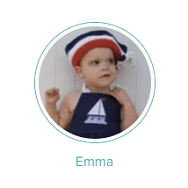 Emma is an 18-month-old little girl referred to our facility in early 2006 for a speech-language evaluation. Emma’s diagnoses include Aicardi Syndrome, Agenesis of the Corpus Callosum (complete), seizure disorder, cerebral palsy, failure to thrive and global developmental delays. The mother reported that Emma’s specialists had predicted that “best-case scenario, Emma might one day sit unsupported” and that her family should not develop expectations beyond that. The family had been advised to equip their home for wheelchair access and to plan on life-long, one-on-one care for Emma.
Emma is an 18-month-old little girl referred to our facility in early 2006 for a speech-language evaluation. Emma’s diagnoses include Aicardi Syndrome, Agenesis of the Corpus Callosum (complete), seizure disorder, cerebral palsy, failure to thrive and global developmental delays. The mother reported that Emma’s specialists had predicted that “best-case scenario, Emma might one day sit unsupported” and that her family should not develop expectations beyond that. The family had been advised to equip their home for wheelchair access and to plan on life-long, one-on-one care for Emma.
Emma was referred to our Speech Therapy Clinic due to communication delays and severe sensory integration deficits. At the time of initial evaluation Emma was 7 months old and her mother reported that Emma displayed only one vocal sound, cried only when in pain, exhibited a severe startle reflex and appeared to have limited visual skills. Results of a language assessment indicated an age equivalency of 4 months for receptive language and a 2-3 month age equivalency for expressive language. A plan of treatment was begun utilizing traditional pre-linguistic therapy modalities including oral motor stimulation, introduction of cause/effect toys, prompting of imitation and numerous sensory integration techniques.
READ EMMA'S FULL SUCCESS STORY
Peter - No more delay for Peter, he moves forward after IM!
I’ve been an OT for 20 years now and have seen many patients with the diagnosis of Developmental Delay. As these children age, some of them do “catch up” but others tend to develop at their own pace. Sometimes other syndromes or conditions or influences are impacting these children as well. One day a mother was talking to me after our OT session and she stated – “He is just marching to the beat of his own drummer!” and that has stuck with me for the past 15 or so years. Well, that statement in itself has a rhythmical reference to it, so I thought why not try IM with some of my patients who had Developmental Delays and see if it would be helpful.
Peter a12-year-old boy was my first prospect. I had known him and worked with him since he was 18 months old. I reviewed with mom what I had learned, and let her know that I thought this might be a good option for her son who was struggling in school and was very slow and awkward in general. She agreed, knowing that at the very least it would be a good workout for him and that he would have to do some good motor planning during the tasks. She committed to coming in 2x/week before school to do the sessions and we would see what happened. She decided not to tell teachers at school or any family members so that we could get any feedback unsolicited.
Our sessions were VERY difficult at first. He scored in the extreme deficiency range for his age and had difficult following the directions to perform simple motor tasks. But we kept it up! I helped him try to find the beat by putting my hands over his or modeling the exercise right next to him so he could follow along. Slowly but surely he started to “get it” – something clicked one day, and we had an “AHA” moment! He began understanding what the red, yellow and green colors meant on the computer as well as how to earn bursts during the sessions. In the clinic, his movements become quicker and we were able to do exercises at 54 beats/minute, which is the default for the program. I noticed that he was able to follow more complicated directions and needed much less verbal and physical cues during our sessions.
Colin - IM helps the student focus at home & in the classroom
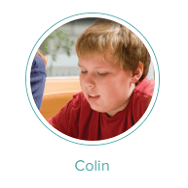 Colin is a 12-year-old boy with a diagnosis of Asperger’s, OCD, ADHD, and APD. Colin is a 7th grader who receives all core curriculums in a self-contained classroom. Colin came for his initial evaluation of auditory processing skills in March 2007. Parental concerns were the following:
Colin is a 12-year-old boy with a diagnosis of Asperger’s, OCD, ADHD, and APD. Colin is a 7th grader who receives all core curriculums in a self-contained classroom. Colin came for his initial evaluation of auditory processing skills in March 2007. Parental concerns were the following:
• Difficulty following directions
• Difficulty staying on task
• Difficulty completing assignments in a timely manner
• Confusing or forgetting verbal information
• Poor self-esteem
• Poor academic grades (C’s and D’s) mostly for work not completed
• Frustration; argumentative
• Poor social (communication) skills
• Poor reading comprehension skills and writing skills
• Dislikes school and reading
Colin enjoyed Science and Math but “hates” English and Language Arts. His handwriting skills were poor. His expressive language skills were better verbally than written though he spoke quickly and often not clearly. He presented as a child with a high I.Q. and excellent vocabulary, however, his performance in reading, writing and comprehension do not reflect his ability. In math, he excels in computation but has significant problems with word problems
READ COLIN'S FULL SUCCESS STORY
Joanne - Don't miss Auditory Processing Disorder, Let IM help!
Auditory Processing Disorder is one of those diagnoses that can sometimes be missed or not even noticed until a child reaches school age. Some of these children are labeled the daydreamers or forgetful by teachers and even family members. Difficulty in school could be lack of attention, poor direction following and slow to respond to questions. Because of these issues, the children may qualify for some Occupational Therapy Services. Your child may be diagnosed by an Audiologist who performs special central auditory processing testing (this is different from the standard audiology screening).
I met a little 7-year-old girl named “Joanne”, and her mom who had read online about Interactive Metronome. Mom read about the sounds utilized in the program, and thought that this program would help her daughter train herself to “catch more of what was going on in the classroom”. She reported that Joanne’s ability to complete oral quizzes was poor and that her teacher reported that she seemed very shy and lost in the classroom setting. In a one-on-one situation, this little girl did well, but add in all the noises of a classroom setting and she would withdrawal. Mom wasn’t sure that she saw any differences in her daughter at home, but she wanted help for her at school.
They came to me with their OT evaluation in hand. It reflected that there were issues with coordination and attention to task. There were comments in the notes about difficulty with direction following, poor processing, slow response time and “clumsiness” when performing novel skilled tasks. During the Interactive Metronome testing, it was observed that Joanne missed many beats, and was late in her responses. She was extremely confused by the addition of guide sounds to the standard reference tone (cow bell sound). It looked like IM would be a good match for her.
Ann - Pediatric Dyslexia Case Study
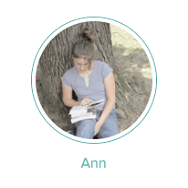 Ann is a fourteen-year-old female diagnosed with dyslexia. For the past few years she had been in inclusion classes and receiving remedial reading with the reading specialist in her school district two times per week. She had completed the 4th level in the Wilson Reading Program and was not receiving remedial tutoring during the time that she was completing IM treatment.
Ann is a fourteen-year-old female diagnosed with dyslexia. For the past few years she had been in inclusion classes and receiving remedial reading with the reading specialist in her school district two times per week. She had completed the 4th level in the Wilson Reading Program and was not receiving remedial tutoring during the time that she was completing IM treatment.
At the initial pretesting session, the Gray Oral Reading Test-4 was administered to assess her reading rate, accuracy, fluency, and comprehension. Ann broke down in tears at her inability to read the simple passages, but she then collected herself and chose to continue the testing with a renewed strength and hope that Interactive Metronome (IM) treatment would be of value in helping her to read better. Ann found her hope in IM through the positive experiences of friend who had completed treatment the previous summer with a 1.5- year gain in reading comprehension fluency and comprehension.
Ann’s initial level of functioning in grade equivalency was a 1.4 in reading rate, 2.2 in accuracy, 1.4 in fluency, and <1.1 in comprehension according to the GORT-4.
